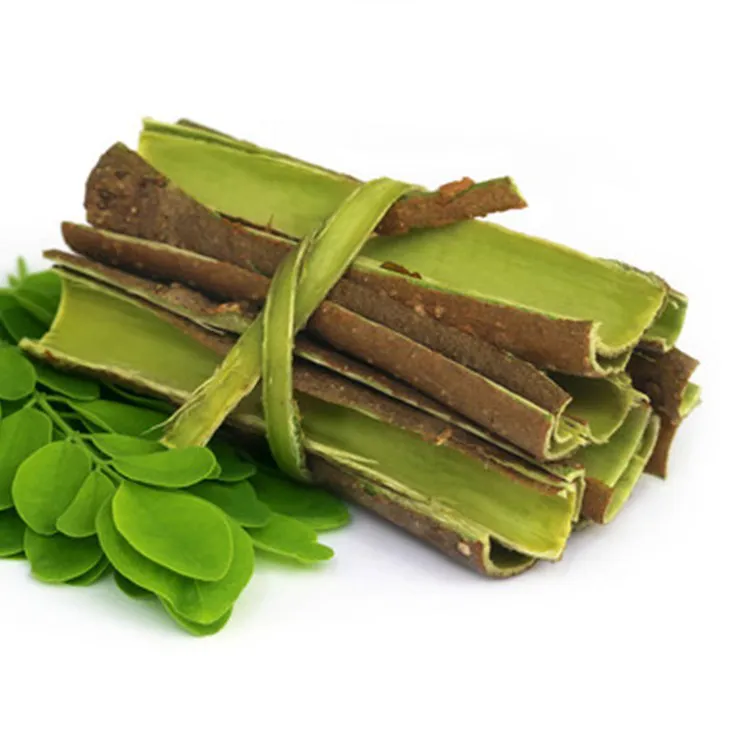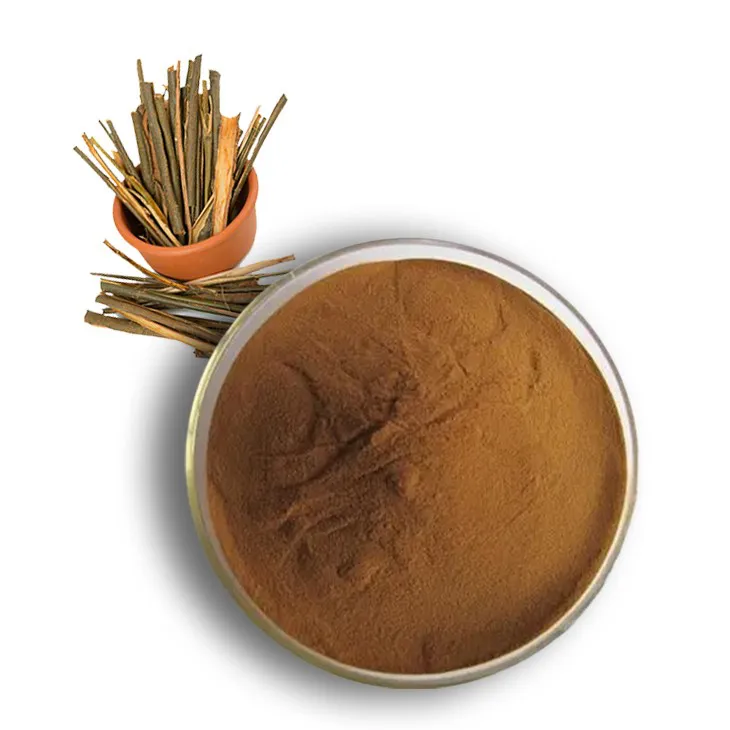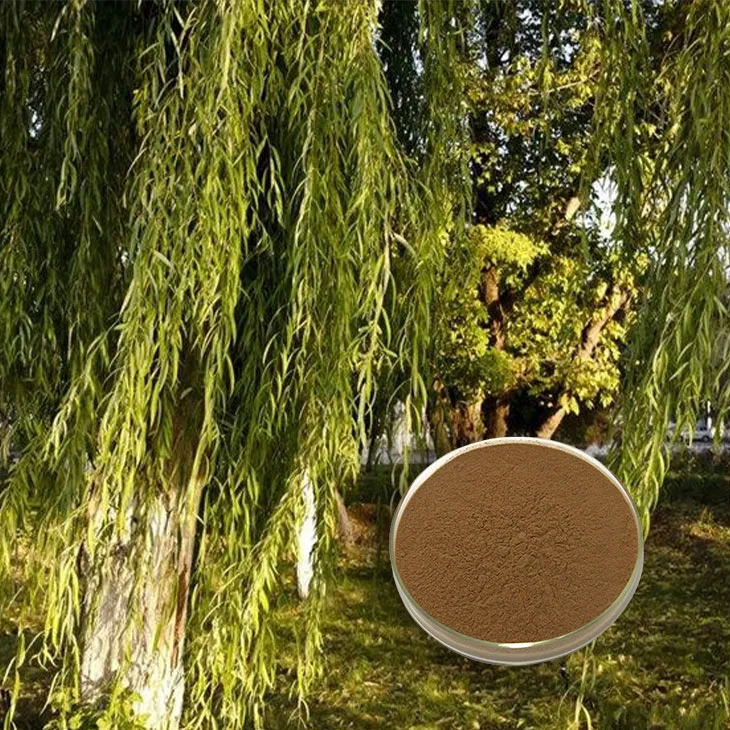- 0086-571-85302990
- sales@greenskybio.com
Bulk purchase of white willow bark extract.
2024-11-26

Introduction
White Willow Bark Extract has been gaining increasing attention in various industries due to its potential health benefits and other applications. When considering a bulk purchase of this extract, it is crucial to be well - informed about several aspects to ensure the quality and value of the purchase.

Origin of the Raw Material
The origin of white willow bark significantly impacts the quality of the extract.
Climate Influence
- White willow trees thrive in specific climates. Regions with temperate climates are often ideal. For example, in areas with mild winters and cool summers, the trees may grow more slowly, which can lead to a higher concentration of active compounds in the bark. Cold winters can act as a natural stressor, prompting the trees to produce more of the bioactive substances that are of interest in the extract.
- In contrast, in regions with extreme climates, such as very hot and dry areas or those with frequent and severe storms, the growth of white willow trees may be stunted. This can result in a lower quality of bark, as the trees may not have had the optimal conditions to develop the necessary chemical constituents.
Soil Conditions
- The type of soil in which white willow trees are grown also plays a vital role. Well - drained, fertile soils rich in organic matter are favorable. Such soils can provide the necessary nutrients for the trees to produce high - quality bark. For instance, soil with a good balance of nitrogen, phosphorus, and potassium can support the biosynthesis of the active ingredients in the bark.
- Poor soil conditions, like water - logged or nutrient - depleted soils, can lead to weaker trees with less - effective bark. The extract obtained from such bark may have lower potency and may not meet the desired quality standards for bulk purchase.

Extraction Method
The method used to extract White Willow Bark Extract is another crucial factor to consider in bulk purchasing.
Traditional Extraction
- One of the traditional extraction methods is maceration. In this process, the white willow bark is soaked in a solvent, usually ethanol or water, for an extended period. However, this method may not be as efficient as modern techniques in extracting all the desired compounds. There is a risk of incomplete extraction, which means that some of the valuable bioactive components may be left behind in the residue.
- Another traditional approach is decoction, where the bark is boiled in water. While this can extract some of the water - soluble compounds, it may also degrade certain heat - sensitive substances. Moreover, the resulting extract may have a relatively high water content, which can affect its stability during storage.
Modern Extraction Techniques
- Supercritical fluid extraction (SFE) is a more advanced method. Using carbon dioxide as a supercritical fluid, it can selectively extract the desired compounds from the white willow bark. This method offers several advantages. It is a cleaner process compared to traditional solvent - based methods as carbon dioxide is non - toxic and can be easily removed from the extract. Also, it can operate at relatively low temperatures, which helps to preserve the integrity of heat - sensitive compounds.
- Ultrasonic - assisted extraction is another modern technique. By applying ultrasonic waves to the extraction system, it can enhance the mass transfer rate and improve the extraction efficiency. This method can break down the cell walls of the white willow bark more effectively, allowing for better release of the active ingredients. It also reduces the extraction time compared to traditional methods.

Quality Control and Certification
Ensuring the quality of White Willow Bark Extract through proper control and certification is essential for bulk purchases.
Chemical Analysis
- High - performance liquid chromatography (HPLC) is a commonly used technique for analyzing the chemical composition of white willow bark extract. It can accurately identify and quantify the main active ingredient, salicin, as well as other related compounds. By using HPLC, suppliers can ensure that the extract meets the specified quality standards in terms of the concentration of key components.
- Gas chromatography - mass spectrometry (GC - MS) is also useful, especially for analyzing the volatile components in the extract. This technique can detect any potential contaminants or impurities that may be present in the extract, such as pesticides or heavy metals.
Certification
- Look for suppliers who have relevant certifications, such as Good Manufacturing Practice (GMP) certification. GMP - certified suppliers follow strict manufacturing and quality control procedures, which can provide assurance of the quality and safety of the white willow bark extract. This includes proper handling of raw materials, clean production facilities, and accurate documentation of the production process.
- Organic certification is also important if you prefer organic - sourced white willow bark extract. Organic certification ensures that the trees were grown without the use of synthetic pesticides, fertilizers, or genetically modified organisms. It also guarantees that the extraction process adheres to organic standards.

Storage Requirements
Proper storage is crucial to maintain the quality of white willow bark extract during bulk purchase and subsequent use.
Temperature
- The extract should be stored at a relatively cool temperature. Ideally, a temperature range between 2 - 8°C is recommended. Storing at lower temperatures can slow down chemical reactions and degradation processes. For example, high temperatures can accelerate the breakdown of salicin, the main active ingredient in the extract, reducing its potency over time.
- Avoid storing the extract in areas with significant temperature fluctuations, such as near heat sources or in direct sunlight. These conditions can cause the extract to deteriorate more rapidly.
Light Exposure
- White willow bark extract should be protected from light. Exposure to light, especially ultraviolet (UV) light, can initiate photochemical reactions that may alter the chemical composition of the extract. Therefore, it is advisable to store the extract in amber - colored bottles or in a dark storage area.
- Even short - term exposure to bright light can have an impact. For example, if the extract is left on a windowsill for a few hours, it may start to degrade, leading to a loss of its beneficial properties.
Humidity
- Controlling humidity is also important. High humidity levels can cause the extract to absorb moisture, which can lead to mold growth or hydrolysis of the active ingredients. The storage area should have a relative humidity of around 40 - 60%. Using desiccants in the storage container can help to maintain the appropriate humidity level.
- In areas with high humidity, such as tropical regions, special precautions need to be taken. This may include using air - tight containers with moisture - resistant seals and storing the extract in a climate - controlled environment.
Supplier Selection
Choosing the right supplier is a key step in a successful bulk purchase of white willow bark extract.
Reputation and Experience
- Look for suppliers with a good reputation in the industry. A supplier with a long - standing history of providing high - quality products is more likely to be reliable. You can check online reviews, industry forums, and testimonials from other customers to assess a supplier's reputation.
- Experience also matters. Suppliers who have been involved in the extraction and supply of white willow bark extract for many years are likely to have better knowledge and expertise in handling the product. They are more likely to have optimized their production and quality control processes over time.
Customer Service
- Good customer service is essential. A reliable supplier should be able to answer your questions promptly and provide detailed information about their products. For example, they should be able to explain the origin of the white willow bark, the extraction method used, and the quality control measures in place.
- They should also be able to handle any issues or complaints efficiently. This includes providing solutions for problems such as damaged shipments or product quality issues.
Pricing
- While price should not be the sole determining factor, it is an important consideration in bulk purchasing. Compare the prices offered by different suppliers. However, be cautious of unusually low prices, as they may indicate lower quality products or unethical business practices.
- Ask for detailed price quotes that include all relevant costs, such as packaging, shipping, and any additional fees. This will help you to make a more accurate cost - benefit analysis.
Conclusion
In conclusion, a bulk purchase of white willow bark extract requires a comprehensive understanding of various factors. From the origin of the raw material to the extraction method, quality control, storage requirements, and supplier selection, each aspect plays a vital role in ensuring the quality and value of the purchase. By carefully considering these factors, buyers can make informed decisions and obtain high - quality white willow bark extract for their intended applications.
FAQ:
Q1: Why does the origin of white willow bark matter in bulk purchase?
The quality of white willow bark can vary according to its origin. Bark from regions with favorable climates and soil conditions is likely to produce a more effective extract. Different origins may lead to differences in the chemical composition and potency of the extract, which directly affects the quality of the final product in bulk purchase.
Q2: What are the common extraction methods for white willow bark extract?
Common extraction methods include solvent extraction, for example, using ethanol or water as solvents. There is also supercritical fluid extraction which can offer high - purity extracts. Each method has its own characteristics and can result in extracts with different chemical compositions and properties.
Q3: How should white willow bark extract be stored during bulk purchase?
It should be stored in a cool, dry place, away from direct sunlight. The storage environment should be well - sealed to prevent moisture and air from affecting the quality of the extract. Also, it is important to keep it away from sources of heat and contaminants.
Q4: How can one ensure the quality of white willow bark extract in bulk purchase?
To ensure the quality, one should first choose a reliable supplier with a good reputation. Check the origin of the raw material and the extraction method used. Request for quality certificates and samples if possible. Also, ensure proper storage conditions during and after the purchase.
Q5: Are there any regulations regarding the bulk purchase of white willow bark extract?
Yes, there are likely to be regulations depending on the region. For example, in some areas, there may be restrictions on the purity levels, labeling requirements, and import/export regulations related to white willow bark extract. It is important to be aware of these regulations to ensure a legal and smooth bulk purchase.
Related literature
- The Potential of White Willow Bark Extract in Modern Medicine"
- "White Willow Bark Extract: Origins and Quality Assurance"
- "Extraction Techniques for White Willow Bark and Their Impact on Product Quality"
- ▶ Hesperidin
- ▶ citrus bioflavonoids
- ▶ plant extract
- ▶ lycopene
- ▶ Diosmin
- ▶ Grape seed extract
- ▶ Sea buckthorn Juice Powder
- ▶ Beetroot powder
- ▶ Hops Extract
- ▶ Artichoke Extract
- ▶ Reishi mushroom extract
- ▶ Astaxanthin
- ▶ Green Tea Extract
- ▶ Curcumin Extract
- ▶ Horse Chestnut Extract
- ▶ Other Problems
- ▶ Boswellia Serrata Extract
- ▶ Resveratrol Extract
- ▶ Marigold Extract
- ▶ Grape Leaf Extract
- ▶ blog3
- ▶ blog4
-
How to make powder from marigold extract?
2024-11-26
-
The Best Source of Natural Açai Extract.
2024-11-26
-
Wholesale Cassia Seed Extract Suppliers.
2024-11-26
-
Nature's Bounty Skullcap Extract.
2024-11-26
-
100% Pure Organic Cranberry Extract.
2024-11-26
-
How to make powder from nettle root extract?
2024-11-26
-
Ginseng Leaf Extract Supplier
2024-11-26
-
Bilberry Extract
2024-11-26
-
Polygonum multiflorum extract
2024-11-26
-
Propolis Extract Powder
2024-11-26
-
Hesperidin
2024-11-26
-
Thunder God Vine Extract
2024-11-26
-
White mustard seed extract
2024-11-26
-
Apricot Powder
2024-11-26
-
Dandelion Root Extract
2024-11-26
-
Bamboo Leaf extract
2024-11-26
-
Panax Ginseng Leaf Extract
2024-11-26





















